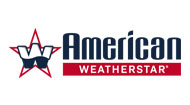*This article will primarily be focusing on asphalt shingle damages because they are the most common roof covering in the United States.
Introduction
When determining if you have roof damage, we must first discuss the different types of possible roof damage. Some damages are visible from the ground or standing on the roof and others need exploratory investigation and are invisible from the ground. Let’s lay out some of these terms and brief descriptions before we move on, it will be important to have this basic understanding before you proceed with this article.
Types of damage
- Manufacturer defects like abnormal granule loss, discoloration, failure to adhere are the most common of these types of damages found today.
- Lichen (algae) are living organisms that eat on the limestone granules in asphalt shingles. The damages look a lot like hail damage to the untrained eye.
- Wind damage includes, creases, missing tabs, slippage, nails being pulled through and mat transfer. The nails and mat transfer are usually invisible without exploratory investigation.
- Hail damage includes random granule loss, punctured matting and divots.
- Vandalism or manufactured damage is due to a human physically stepping on, lifting, or intentionally trying to emulate storm damage.
- Blistering and thermal cracking, this is generally due to heat or poor ventilation but sometimes can be due to a manufacturer defect. The cracking looks like lightning bolt patterns and blisters are very dark and cleaned out pits on the shingles.
- Normal wear and tear, widespread granule loss, cupping, curling, nail pops. The truth is that asphalt shingles typically last 18-25 years due to the elements that they are exposed to.
Is it covered by insurance?
I know you are wondering so I thought I’d answer this quickly before we proceed. Out of the damages listed above, these are the ones that 99% of the time would NOT BE COVERED by insurance.
- Blistering
- Thermal cracking
- Manufacturer defects
- Lichen/Algae
- Normal wear and tear
Any of the others could potentially be claimed on your insurance.
Credibility
Where am I getting my info and how am I a credible source when it comes to this type of information? I was an adjuster for nearly a decade and reviewed or approved thousands of insurance claims per year. I am also HAAG certified as a residential and commercial roof inspector and work with insurance claims daily in my roofing business at Roof Central. I am well versed in what is and is not legitimate damage and what it was caused by.
Now Onto the Good Stuff!
I will provide photos, supporting documents and references for you in the following sections of this article and hop that it will educate you quickly and thoroughly on this topic of damage on roofs. Use this as a guide when filing a claim, helping a family or friend decide if they need to file a claim or to support your claim in the event that an insurance company disagrees.
- Manufacturer defects-
Top left is an example of irregular granule loss, notice how they are all located in the same spot on each shingle, that’s the giveaway if it were more random, it may be more difficult to tell.
Top right is called shading or discoloration. This is due to the dye in the granules being different and over time it begins to show up in a big way. This scenario is also potentially an installation issue if the roofing company either knew and ignored the different dye lot labels on the bundles or did not know to check them
Bottom photo shows lack of adhesion. If you lift the shingle, you should see adhesive or parts of the shingles sticking to the underside because it was properly bonded.

2: Lichen/Algae-
Top left is a lichen growth on a shingle before it is removed by hand or the weather.
Top right is algae streaking, it looks terrible but is not really damaging the roof at a fast pace.
Bottom is a lichen growth removed to reveal what looks much like a hail divot to many.

3. Wind damage-
The 2 photos on the left side of the collage are the obvious wind damages that most insurance companies train their adjuster to look for. The right-side photos are hard to spot and take a trained professional and deep investigation to find and verify.

4: Hail Damage-Top left and right photos are hail damaged metal accessories. Bottom left photo is a roof with severe and obvious hail damage to the shingles. The bottom right photos are of light to moderate hail damage to shingles. the main giveaway on hail damage is finding metal damage and then circular spots on the shingles that have dirty centers, when hail knocks off granules, it also pushes granules into the asphalt matting.

5: Vandalism or Manufactured Damage-
Top photo is caused by a golf ball on a string that was fabricated to try and trick an insurance company into believing there was hail damage on the roof. The bottom photo is of hand torn asphalt shingles. Notice the jagged edges, this is typically the giveaway.

6:Blistering and Thermal Cracking-
Top left is a shingle with blisters that have not popped yet.
Bottom left photos show popped blisters, notice the very clean centers and sharp edges.
The right side photos are shingles with thermal cracking present, notice the lightning bolt look.

7: Normal wear and tear-
Top left photo is an old roof that is cupping and curling on the shingle edges this is standard wear and tear on older roofs especially organic shingles that are discontinued.
Top right photo is uniform granule loss, since it is uniform and not random, it indicates wear and tear instead of hail damage .
Bottom photo is a really old organic shingle that is falling apart and flaking, this is not wind or hail damage.

Forensic Engineers, Insurance Companies and Other 3rd Party Experts to Support This Information-
Hail damage- https://app.companycam.com/report/376d8b1a-dc11-48a0-a935-ecf7090a066f
Wind damage- https://app.companycam.com/galleries/eAzjy6Fx
Closing-
Thank you for reading this article to learn about roof damages and their causes. My intent is to help educate and standardize the industry so that there are far less disputes on insurance claims and so that property owners can be taken care of by their insurance companies in time of real need.


 Leak Detection
Leak Detection  Repair
Repair  Restoration
Restoration  Inspection
Inspection  Maintenance
Maintenance  Claim Assistance
Claim Assistance 


